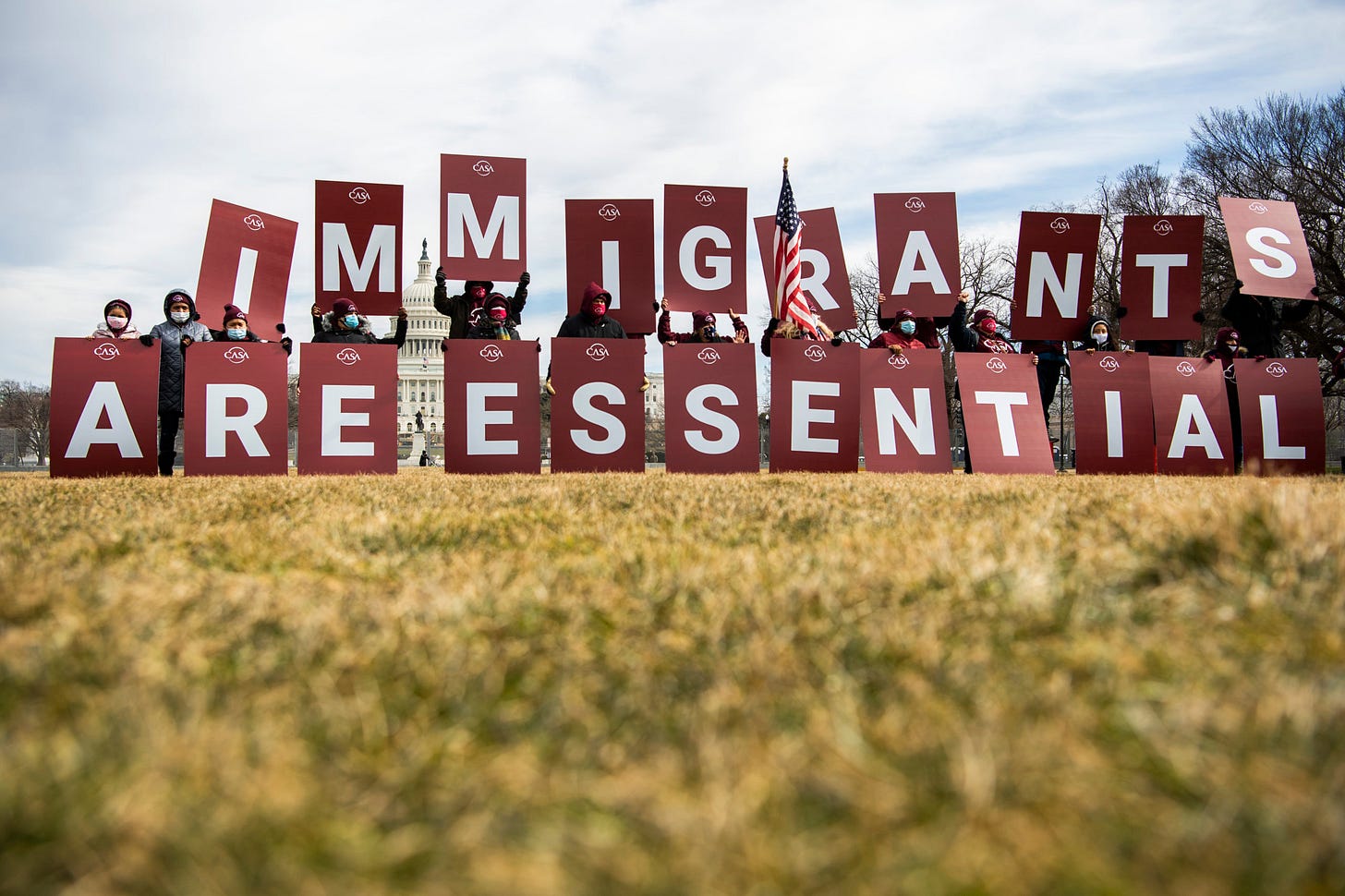More Immigration, Less Inflation
Democrats have the opportunity to solve one problem with another.

Democrats are bracing for a grueling election in November, thanks mostly to the twin issues of inflation and immigration. What seems to elude policymakers on both sides of the aisle, however, is how closely tied the two problems are and why increasing immigration levels could help lower inflation. Instead, moderate Democrats are wringing their hands over the Biden administration’s plan to lift Trump-era Title 42 health restrictions at the border, which will make it more difficult to turn back undocumented border crossers. Democrats fear that scenes of thousands of asylum seekers allowed temporary entry while their claims are adjudicated will reignite the anti-immigrant firestorm that launched Trump’s campaign in 2015. They may be right about the politics of immigration among the Republican base, but that’s a small slice of the electorate, and and influx of working-age migrants is just what the economy needs right now.
The pandemic has drastically changed the American workforce. More than 47 million Americans quit their jobs in 2021, the highest level in 20 years, including almost a quarter of Hispanic and Asian workers. A Pew study shows that most people who quit cited low pay and no opportunity for advancement (63 percent) or said they felt disrespected at work (57 percent). Most of these workers found other jobs, with a majority (56 percent) earning more than they did previously. While that increased pay accrues benefits to individual workers, the costs are born by employers and consumers in the form of higher prices.
Job dissatisfaction may spur upward mobility, but then who is going to do the jobs ambitious workers leave? For decades, new immigrants filled the first rungs on the economic ladder, taking entry-level jobs in the service, food, and construction industries while building the work experience and language skills needed to move up over time. But immigration restrictions over the last half-decade stemmed the flow of new workers into the United States—and the combination of the Trump administration and COVID restricted it even more.
The best solution, of course, would be for Congress to enact legislation allowing more workers to enter the country and granting legal status to the millions of undocumented workers already here, two-thirds of whom have lived here more than 10 years. And there is some hope that a bipartisan compromise might be possible, with Sens. Thom Tillis and Dick Durbin planning to convene bipartisan talks after the recess to see whether a 60-vote margin is possible on some elements of immigration reform. “The only way that we’re going to get real progress is have a four-pillar discussion—so immigration reform, DACA, border security, and then I think asylum reform is pretty important particularly with that’s going on with Title 42,” Tillis told the Hill last week.
The last time the Senate successfully tackled immigration reform was in 2013, but despite passing bipartisan legislation 68-32, the bill died in the House thanks to overwhelming GOP opposition, so I’m not holding my breath. In the meantime, admitting asylees and giving them work authorizations, as well as allowing in more Ukrainian and Afghan refugees, could alleviate some of the country’s labor shortage.
The Department of Labor reported last month that there were 11.3 million job openings in February, a number that has remained at historic highs for months. We should be opening our doors wider so that those seeking refuge in the United States can come here and help fill those jobs. Not all those who will likely gather at the southern border as Title 42 restrictions are lifted will fit the bill, but enough will that it could improve employment conditions in many areas. Even among Central American families who comprise the largest group of asylum seekers, adult family members will be eager to work if given the chance. College graduates in the Ukrainian and Afghan refugee population as well as truck drivers, electricians, plumbers, roofers, and others with needed skills would be a welcome addition to many communities. With hundreds of thousands of Russia’s most highly educated, employable, and liberal-minded citizens fleeing for countries with freer societies and brighter futures, surely some of them would be welcome in the offices of American companies struggling to hire.
Though policymakers don’t like to talk about it, unauthorized immigration has played an important role in the labor market for the last several decades. Americans intuitively understand this. A 2020 Pew poll found that 77 percent of Americans believed that undocumented immigrants fill jobs Americans don’t want—and this was during the height of the pandemic when unemployment was rising. Certainly it would be better if Congress came together to fashion a sensible immigration reform bill that included better border security to keep out drugs and dangerous criminals, but let in needed workers.
In the meantime, the numbers of asylees and refugees likely to be admitted in the coming months will help ease inflationary pressures on wages and supply chain backlogs that labor shortages have created. The challenge for Democrats will be to accelerate the process so Americans can start to feel the economic benefits before the midterm elections, and to talk about those benefits rather than panicking.


